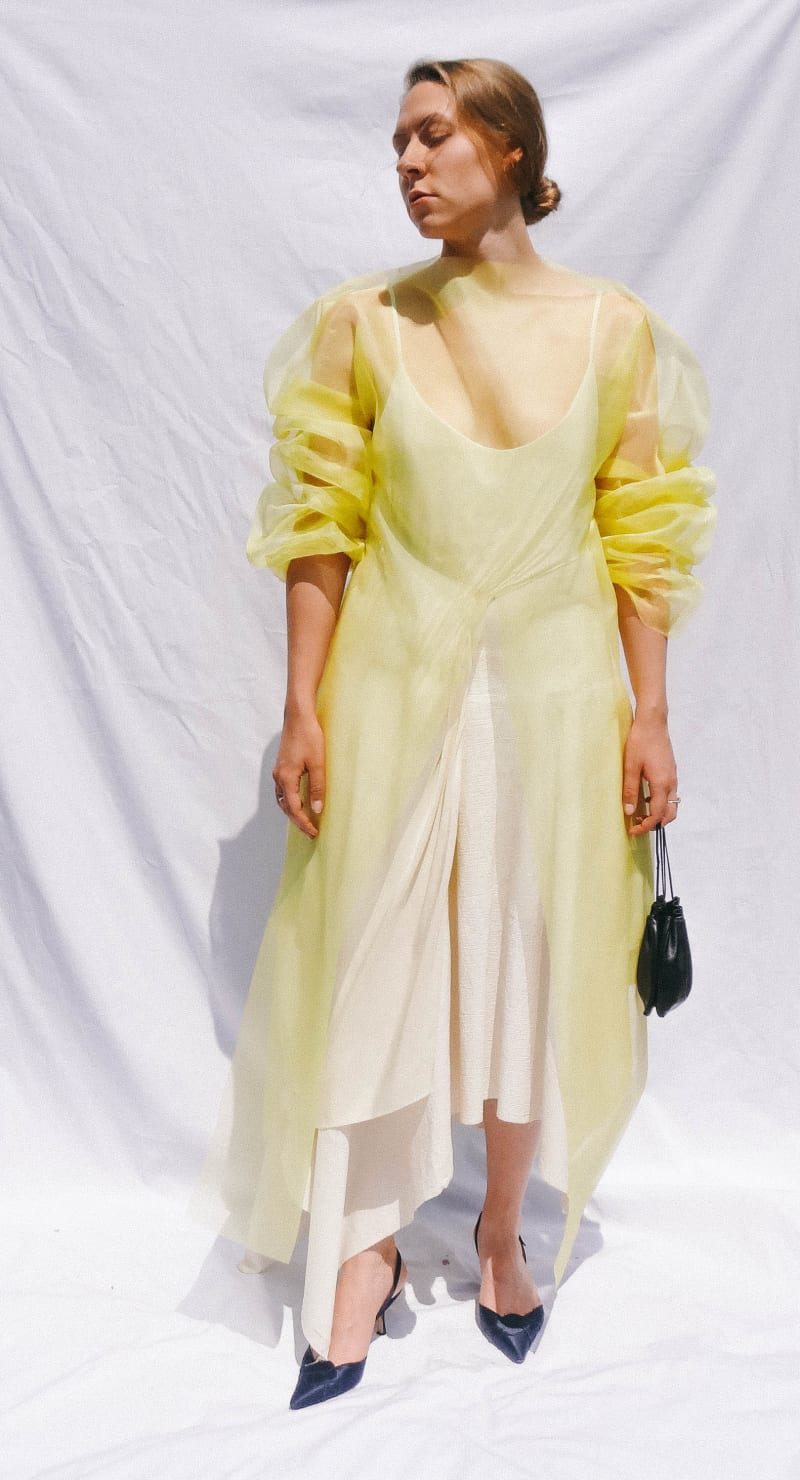Hannah Fashion Institute of Technology 2016
Essential coronavirus information
Profession
BA Womenswear Alum
College
London College of Fashion

Biography
Could you describe a fiddling well-nigh your personal background and what your piece of work stands for?
I am half British, half German and grew up in Munich. Within the by three generations on both sides of my family, women take been sewing either professionally or in their spare fourth dimension. My mother taught me to use her sewing auto when I was eleven years old. "Make it yourself" has been my slogan ever since. After interning at multiple tailoring ateliers and the Bavarian Country Opera, I realised my interests went further than sewing, I also wanted to be part of the design process.
Crafting techniques take centre stage inside my work as they are a function of my identity. My aim is to explore ways of bringing gimmicky relevance to arts and crafts and highlight its value in shaping a sustainable future of mode.
With your designs being inherently related to nature, how has the digital shift contradistinct your working habits and idea processes?
With the outbreak of the pandemic, the hand-in requirements for my BA project changed completely, as there was no longer admission to the academy's studios. I was forced to re-define the outcome of my drove within a thing of days. This really pushed me outside of my comfort zone and atomic number 82 me to innovate digital tools into my exercise.
This new realm of possibility pushed my innovative thinking, speeding upward my design visualisation and process. For my updated project outcome, I proposed a multi-faceted business model that champions craft and its contemporary relevance.
In my retail experience model, collections are presented in digital form. In a virtual showroom, my customer can try on garments using a customised avatar based on body scans. By altering the fit, colour or materials, they become part of the design process. The measurements supplied past their trunk scan, enable the cosmos of made-to-measure garments.
A website provides information on the collection, creative process and on the supply chain, to ensure sustainability standards are met.
A walk-in showroom creates a space for my customer to experience the brand physically. The brandish of collection samples, augmented past photography and moving-picture show, give the customer the opportunity to experience the garments close up and trying them on before completing the body browse and ordering their custom-made piece.
This shopping experience is flexible and inclusive, as it is based on measurements instead of gender and can be tailored to every customer's individual needs, abilities and preferences.
My customer becomes part of my earth, gains a sense of belonging and achievement, and most chiefly, a further understanding of the truthful worth of the production.
The digital shift allowed me to envision a model that combines craft with engineering. My designs go on to be inherently related to nature but are now presented on a contemporary platform, that attracts a broad range of customers and builds a meaningful connection through digital and physical platforms.
In an online age, why is it yet significant for designers to consider the surroundings?
Fifty-fifty though many segments of the fashion industry take identify online, our products are physical, made from raw material, manufactured by homo beings, shipped across the planet and live a relatively short life as a garment. I am not a supporter of moving fashion exclusively online, as in the end we still need to and desire to clothe our bodies. Nosotros utilise garments as ways of expression and exploration of our identities. A fabric´south concrete and intimate qualities let it to human activity like a second skin, receiving our smell and shape. Textiles embody memory and can be of corking sentimental value. However, it is essential that as function of the fashion industry we are enlightened of the issues we cause and that we work to decrease them drastically.
You have been unable to attend classes and collaborate as normal. How does it experience to be graduating in isolation?
It was, and well-nigh a year later, continues to exist very difficult. I lack a sense of closure. My studies were such an intense experience. During which I met so many nifty people I could not say goodbye to. Now we are scatted all across the world and will never come together again. I miss LCF a lot. The building, the staff, my fellow students and the creative and supportive atmosphere.
Fashion has developed a greater need for online connection. How do you think virtual showcases and mode weeks will shape the manufacture going forward?
I believe at that place will be an exciting mix of digital and physical approaches. Virtual and augmented reality open up new possibilities while offering a more environmentally friendly arroyo. Still, I don't believe that they will fully replace physical shows, equally we will withal want to travel to experience fashion and civilisation showtime-hand.
What the last yr has already shown us, is that fashion is losing its exclusivity. With fashion shows increasingly being online events, brands are opening upwards to a wider audience and are confronted with their firsthand responses. They are chosen out for cultural inaccuracy, lack of multifariousness or lack of innovation and excitement. I hope that this will forcefulness brands to reflect on their do and identity and follow the public'southward asking for environmental consciousness, social justice, cultural representation and inclusivity.
0 Response to "Hannah Fashion Institute of Technology 2016"
Post a Comment